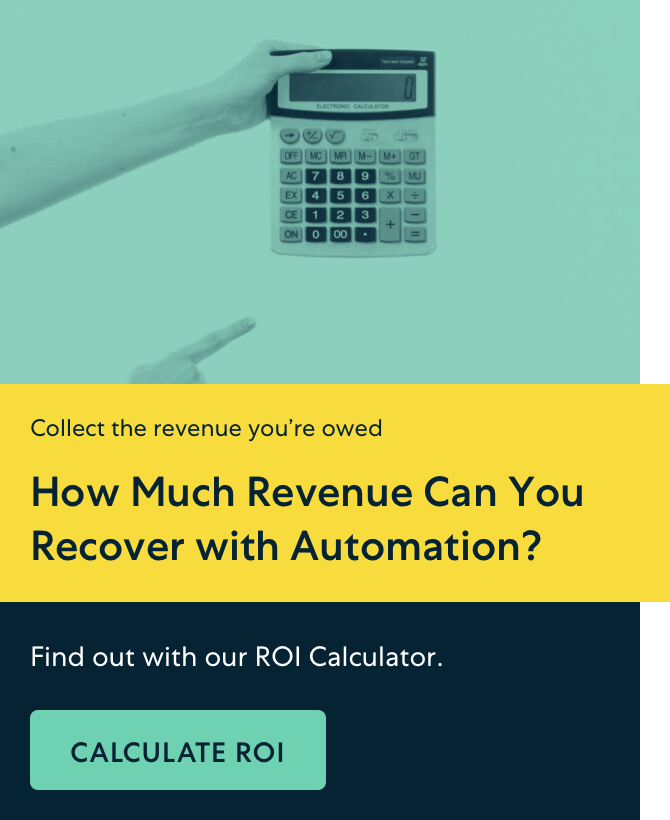The past several years have seen their share of ups and downs for automotive giant Tesla. At the end of Q4 2022, the electric auto manufacturer announced a net income of $3.7 billion for the quarter, bringing the full year to $12.6 billion in profits. However, the entanglement with Elon Musk’s purchase of Twitter in October 2022, Tesla stock prices plunged from $309 per share two months prior to the acquisition, to as low as $108 per share in early 2023.
Between the acquisition woes affecting stock prices, the first half of 2023 continued to be tumultuous as Tesla slashed prices on vehicles to increase demand, meaning its profit dropped sharply in Q1 2023 to $2.5 billion.
Then Tesla made headlines once again announcing their current liability of 1.75 billion in deferred revenue at the end of Q1 2023. Is deferred revenue a good thing or a bad thing for the company’s balance sheet? What exactly is deferred revenue and what does this number mean for businesses like Tesla?
The Complete Guide to Doing Billing Better
This guide will walk you through the wide range of features required to automate your recurring billing, subscription management, and payment processes.
DOWNLOAD THE GUIDE
TL;DR
- Deferred revenue is payment that has been received for goods or services before they’ve been fully delivered.
- While this is a standard business practice, deferred revenue is considered a liability, not an asset. This is because the business still ‘owes’ the customer the service.
- Deferred revenue is commonplace for a SaaS company, as well as and other subscription-based, recurring revenue businesses. Accurately tracking revenue recognition is essential to determine the health of your business, now and in the future.
Examples of Deferred Revenue
For those of us who are not accounting pros, let’s start with some terminology.
Generally accepted accounting principles (GAAP) require businesses to account for revenue when it is earned, as well as expenses when they are incurred by the business. However, depending on the type of business and payment structure, there are accrual and deferral methods used to comply with these fundamental accounting principles. In order to adhere to GAAP bookkeeping practices and accounting standards, accounts receivable must report deferred revenue as a liability and should be kept in a deferred revenue account.
Deferred revenue is payment that has been received for goods or services before they’ve been fully delivered. Subscription businesses work with deferred revenue day-in and day-out because they collect payments for goods or services in advance of providing them. One example of a prepaid expense comes in the form of rent payments, typically made upfront on the first of the month and covering that calendar month. Another instance of deferred revenue comes in the form of retainers, typically paid to lawyers to retain their services before they’re fully rendered.
Deferred revenue is the opposite of accrued revenue, which is earned revenue that has not been received into the company’s bank account upfront—so when a payment is made after the goods or services are delivered.
Other common examples of deferred revenue include streaming and subscription services. For example, Disney+ was released to the public, giving subscribers access to all things Disney-related starting at $7.99 a month. A customer pays that fee at the beginning of the month before they can even start the first movie or show. However, Disney+ cannot consider that payment as income just yet.
Because of the stringent ASC 606 revenue recognition standard, businesses are required to divide that money into two different pots: earned revenue and deferred revenue—also known as unearned revenue or unrecognized revenue.
On that first day, only 1/30 of that $7.99 can be considered earned revenue, while the balance is considered deferred revenue. Each day the customer has access to Mickey Mouse, another thirtieth of that payment shifts from the deferred revenue pot to the earned revenue one.
At the end of the 30-day billing period, the entire $7.99 that was provided at the beginning of the payment period is now considered earned revenue.
What You Need to Know About Deferred Revenue Liability.
While collecting payment in advance of providing a service is a standard business practice in the subscription world, it’s important to note that deferred revenue is considered a liability, not an asset. This is because the business still ‘owes’ the customer the service.
Businesses that use the subscription billing model have the additional pressure to keep their customers happy by providing excellent service at a competitive price, backed by knowledgeable customer care.
But let’s say a customer is dissatisfied with the service being provided and decides to cancel halfway through the billing period. There are two different options a business can exercise:
- Elect not to refund the payment but keep the subscription and access to the service active until the time when it would automatically renew. Commonly with a monthly subscription, a business will say, “Okay, we’ll cancel your subscription after this period. Feel free to use our services through the rest of the subscription period.”
- Refund the unused portion of the payment. This option is used more often in the case of an annual subscription versus monthly subscriptions.
A business that elects to refund the revenue that’s been deferred will need to issue a credit. This can get tricky if using a legacy billing system because the manual steps are prone to errors. Recurring billing software, on the other hand, can make these changes accurately, seamlessly, and automatically—accurately tracking sales revenue and ensuring businesses have access to important accounting metrics.
When deferred revenue may be beneficial
So if deferred revenue is considered a liability, why do businesses elect to follow this business model?
When scaling, businesses can use deferred revenue to grow or expand their offerings, enabling them to use the pre-payments to fund growth initiatives. For example, if a business has $100,000 in deferred revenue sitting on the balance sheet, it may opt to use that instead of taking out a large loan, using the unearned revenue as cash flow instead of borrowing from the bank. Loans, after all, impact a business’s credit and may make them less attractive to investors.
This practice may be more practical for particular businesses.
A business that’s using deferred revenue to make capital investments can run into trouble. For example, if you’re using unearned income to build a manufacturing facility that in turn will create widgets customers have already purchased ahead of time, what happens if customers decide to cancel their orders? In short, this can create a long-term liability for businesses and should be carefully managed.
Another concern is when a business is sold: what happens to the deferred revenue?
Although deferred revenue is considered a liability, accountants say it needs to be recognized as income as soon as the sale is complete.
As accounting and consulting service provider CitronCooperman suggests, “While there is a current benefit to deferring revenue, immediately upon the sale of assets, these advanced payments are required to be recognized as income. This acceleration will occur regardless of whether the products have been delivered or services performed, potentially creating an unexpected tax burden.”
How to properly realize deferred revenue
When using accrual-based accounting, company income is only recognized as revenue once the good or service is delivered, until then, it is a liability. If your company receives payment for goods or services that will be delivered in the future, they must be properly recorded in deferred revenue journal entries—an accounting method to ensure assets and liabilities are properly accounted for.
A deferred revenue journal entry is when accounts receivable recognizes business transactions for revenue that is not yet earned. Essentially, when recording deferred revenue, it is a debit to your assets and a credit to your liabilities. Once deferred revenue is recognized (i.e., the product or service is delivered), the deferred revenue account is debited and the asset or revenue account is credited on the income statement.
Making sense of Tesla’s deferred revenue
One of the reasons Tesla has such impressive (or alarming) deferred revenue numbers is because many customers prepaid for the company’s ‘autonomy package,’ also known as ‘full self-driving’. In fact, prepaid orders go back as far as 2016, creating a long-term liability for the company.
Customers who purchased this package have received the onboard computer and all the required hardware already built into their Tesla vehicles. To date, the software to run this feature is still in development, but when it’s ready, the software will be installed over the air—essentially uploaded into the already-installed vehicular operating systems.
However, when the launch of the autonomy package will be is still unknown. In an April 2023 conference call, Musk stated, “I hesitate to say this but I think we’ll do it this year.”
Not exactly a confident message about delivery, especially considering the failure to meet previous timeline projections and the legal scrutiny following issues with test versions. In short, the deferred revenue liability is massive in this instance, as the ability to deliver the product is in question.
High deferred revenue rates are in other businesses too
It’s important to note while 1.75 billion dollars in deferred revenue almost seems mind-boggling, the practice isn’t exclusive to the automotive giant.
For example, in financial statements from2022, Apple reported it had $7.9 billion in deferred revenue,, which is a slight increase from the end of October 2021 where Apple reported $7.6 billion in deferred revenue. Amazon Web Services has also had deferred revenue rates in the nosebleed section.
At the end of Q1 2023, the company reported a staggering $14.28 billion in deferred revenue. This is because it’s working through contracts that are primarily related to Amazon Web Services. For comparison’s sake, when compared with other companies in the retail sector with an average of $500 billion in deferred revenue, AWS is well above the average for this practice.
Is Tesla’s ‘cookie jar’ a concern?
The fact that Tesla is sitting close to two billion dollars in deferred revenue is making a lot of investors and observers nervous.
Prior to the Q3 2019 earnings release, AB Bernstein’s senior technology research analyst, Toni Sacconaghi, wrote about what he considered Tesla’s ‘Autopilot cookie jar’.
“Today, Tesla defers about $2,000 to $3,000 in revenues per car sold at time of sale—roughly half can be ascribed to Autopilot/FSD, and half to free/discounted Supercharging, free internet connectivity and future OTA software updates. In contrast to most of Tesla’s deferred revenue, which rolls off fairly predictably, recognition of deferred Autopilot/FSD revenue can be very non-linear: every time new Autopilot functionality is added, Tesla will draw down incremental deferred revenues for what it believes to be the value of the new functionality.”
In 2020, Tesla became profitable for the first time, and has continued its profitability journey since, reporting $12.5 billion in profits in 2022, with a total revenue of $81.4 billion. However, with the large amount of deferred revenue on the books and questions about some of the features in development that were pre-purchased—such as the self-driving functionality—whether or not the other shoe will drop is an open question.
Deferred revenue is commonplace for a SaaS company, as well as other subscription-based, recurring revenue businesses. Accurately tracking revenue recognition is essential to determine the health of your business, now and in the future.
When a business is scaling, it can be too easy to treat unrecognized revenue as ‘cash in hand’, but your business is responsible for upholding your terms in an agreement with customers by delivering the services as soon as they’re available. While the companies discussed earlier are large enterprises, these same principles apply to small business owners as well, as deferred revenue may be applicable to some business models.
FAQs about Deferred Revenue
Q: What does ‘Deferred Revenue’ mean in business?
Deferred revenue is a term used to describe payment that has been received for goods or services before they have been fully delivered. This is a common practice in subscription-based businesses that collect payments for goods or services in advance of providing them. Although initially counted as a liability, the total value transitions to recognized revenue over the course of the service period.
Q: Why is deferred revenue considered a liability rather than an asset for businesses?
Deferred revenue is considered a liability because at the point of payment collection the service or product hasn’t been fully delivered. The business essentially ‘owes’ the customer the service they have paid for in advance. Only when the service is fully delivered or the product supplied can deferred revenue be recognized as earned income.
Q: Can a customer who is not satisfied with services rendered request a refund from businesses that use the subscription billing model?
Yes. If a customer is dissatisfied with the service, they can choose to cancel their subscription. In such cases, businesses may either elect not to refund the subscription payment but instead keep the service active until its next renewal date, or refund the customer the unused portion of their payment. The latter is more often used for annual subscriptions.
Q: How can deferred revenue benefit businesses that are scaling up?
Businesses that are scaling can use deferred revenue to grow their venture or expand their offerings. This model allows them to use the early payment from customers to fund their growth initiatives, thereby avoiding the need for business loans which could impact their credit and attractiveness to investors.
Q: Is deferred revenue a practice exclusive to specific businesses, such as automotive giant Tesla?
No, deferred revenue is a common practice in many industries, especially in SaaS and other subscription-based businesses. Apple and Amazon Web Services are other examples of businesses that also have large amounts of deferred revenue. It is not a practice exclusive to any particular company or industry.
Q: Are there possible pitfalls for businesses that heavily rely on deferred revenue?
Potentially, yes. If a business uses deferred revenue to fund large capital investments such as building a facility or manufacturing products that customers have already purchased in advance and customers cancel their orders, the business could face financial challenges. Also, when a business is sold, deferred revenue is required to be recognized as income immediately upon the sale of assets, potentially leading to an unexpected tax burden.
Q: How crucial is it to accurately track revenue recognition for a business?
Accurately tracking revenue recognition is essential in determining the financial health of a business, both presently and in the future. While deferred revenue may seem like cash in hand, businesses must uphold the terms of their agreements with customers by delivering services promptly as soon as they are available.







